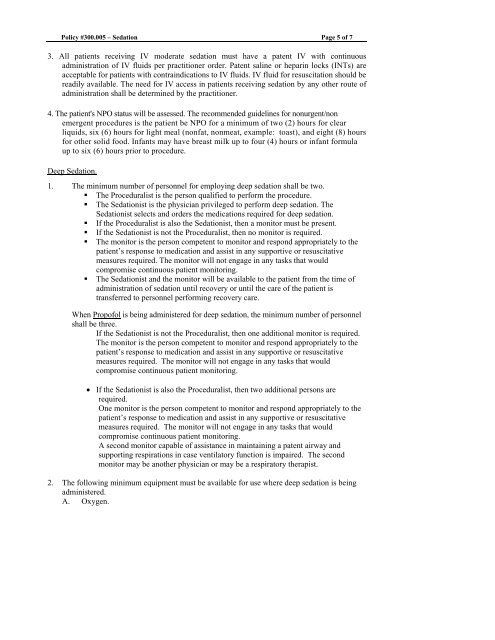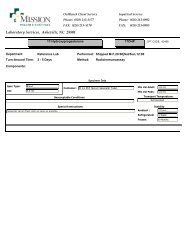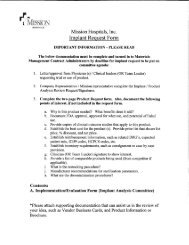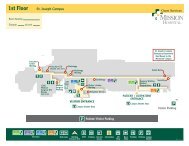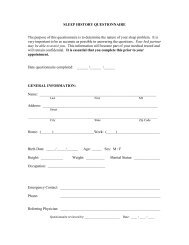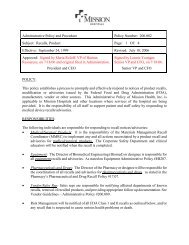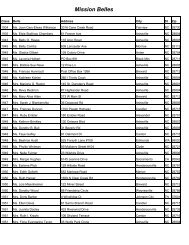PRE-SEDATION EVALUATION FORM (DRAFT) - Mission Health
PRE-SEDATION EVALUATION FORM (DRAFT) - Mission Health
PRE-SEDATION EVALUATION FORM (DRAFT) - Mission Health
Create successful ePaper yourself
Turn your PDF publications into a flip-book with our unique Google optimized e-Paper software.
Policy #300.005 – Sedation Page 5 of 73. All patients receiving IV moderate sedation must have a patent IV with continuousadministration of IV fluids per practitioner order. Patent saline or heparin locks (INTs) areacceptable for patients with contraindications to IV fluids. IV fluid for resuscitation should bereadily available. The need for IV access in patients receiving sedation by any other route ofadministration shall be determined by the practitioner.4. The patient's NPO status will be assessed. The recommended guidelines for nonurgent/nonemergent procedures is the patient be NPO for a minimum of two (2) hours for clearliquids, six (6) hours for light meal (nonfat, nonmeat, example: toast), and eight (8) hoursfor other solid food. Infants may have breast milk up to four (4) hours or infant formulaup to six (6) hours prior to procedure.Deep Sedation.1. The minimum number of personnel for employing deep sedation shall be two.• The Proceduralist is the person qualified to perform the procedure.• The Sedationist is the physician privileged to perform deep sedation. TheSedationist selects and orders the medications required for deep sedation.• If the Proceduralist is also the Sedationist, then a monitor must be present.• If the Sedationist is not the Proceduralist, then no monitor is required.• The monitor is the person competent to monitor and respond appropriately to thepatient’s response to medication and assist in any supportive or resuscitativemeasures required. The monitor will not engage in any tasks that wouldcompromise continuous patient monitoring.• The Sedationist and the monitor will be available to the patient from the time ofadministration of sedation until recovery or until the care of the patient istransferred to personnel performing recovery care.When Propofol is being administered for deep sedation, the minimum number of personnelshall be three.If the Sedationist is not the Proceduralist, then one additional monitor is required.The monitor is the person competent to monitor and respond appropriately to thepatient’s response to medication and assist in any supportive or resuscitativemeasures required. The monitor will not engage in any tasks that wouldcompromise continuous patient monitoring. If the Sedationist is also the Proceduralist, then two additional persons arerequired.One monitor is the person competent to monitor and respond appropriately to thepatient’s response to medication and assist in any supportive or resuscitativemeasures required. The monitor will not engage in any tasks that wouldcompromise continuous patient monitoring.A second monitor capable of assistance in maintaining a patent airway andsupporting respirations in case ventilatory function is impaired. The secondmonitor may be another physician or may be a respiratory therapist.2. The following minimum equipment must be available for use where deep sedation is beingadministered.A. Oxygen.


